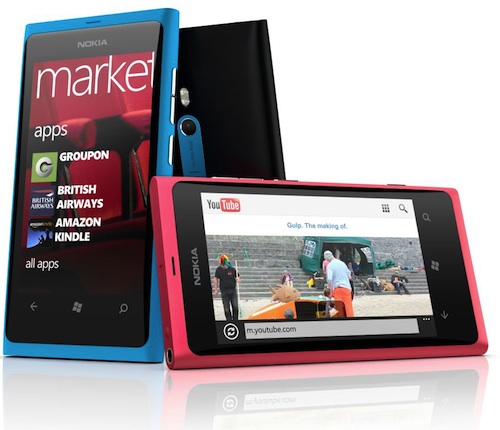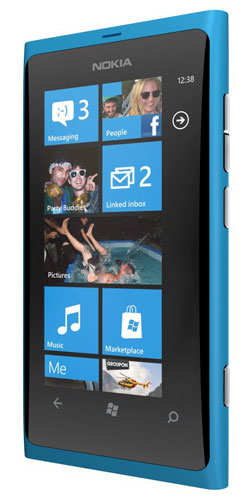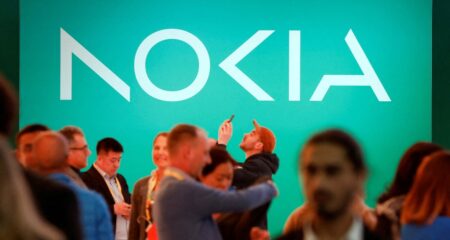
I’ve always been a fan of Nokia handsets. Well, I was, until a few years ago when the company broke what to me was its best series of keyboard-based smartphones, the E-Series. When it was released in 2008, the E71 was one of the best phones on the market. Then Nokia ruined it with the update, the E72, which had so many flaws in its software as to render it virtually unusable.
With some reluctance, I abandoned my decade-long relationship with Nokia devices, joining the iPhone brigade and later, as Android improved, switching to Google’s fast-growing platform.
Until recently, Espoo, Finland-based Nokia has been a company in decline, behaving like a deer caught in the twin headlights of Apple and Google, uncertain of how to react to a rapidly changing market.
The result of the paralysis (and falling market share) was a management overhaul, which saw former Microsoft executive, Canadian Stephen Elop, enlisted to take charge of the company. Soon after starting, he penned his now-famous and rather brutal “burning platform” memo, meant as a wake-up call to the Nokia troops, and surely something that will be studied in business schools for years to come.
Elop abandoned Nokia’s long-treasured Symbian operating system, at least on its high-end smartphones, instead getting into bed with another company struggling to gain much traction in the smartphone market. Microsoft had abandoned, belatedly, its own smartphone platform, Windows Mobile, and was readying a new attack with the radically redesigned and generally well-received Windows Phone.
In turning to his former employer, Elop took a big gamble that the two companies together could create something much bigger than the sum of the two parts. The Lumia 800, the first of two products flowing from the partnership, seems to have vindicated his strategy.
The device, which goes on sale in SA this week (the cheaper Lumia 710 will follow in the second quarter), is one the best smartphones the Finnish company has produced in years. There are a few niggles here and there (lack of supported apps is the biggest issue) but, for the first time, Nokia has a phone that, feature for feature, is the peer of Apple’s iPhone.
Hardware
The Lumia 800 is basically the same phone as the earlier Nokia N9 device, which runs the MeeGo operating system, soon to be abandoned in favour of Windows Phone.
 It has a super-bright, 480×800-pixel, 3,7-inch curved Amoled display with tough Gorilla Glass to protect against knocks and falls; 16GB of internal flash memory; a high-quality 8-megapixel camera with Carl Zeiss optics (there’s no front-facing camera, but who needs one?); a single-core 1,4GHz Snapdragon Scorpion processor with an Adreno graphics processing unit; assisted GPS; accelerometer; and all the wireless bells and whistles, including cellular downloads of up to 14,4Mbit/s.
It has a super-bright, 480×800-pixel, 3,7-inch curved Amoled display with tough Gorilla Glass to protect against knocks and falls; 16GB of internal flash memory; a high-quality 8-megapixel camera with Carl Zeiss optics (there’s no front-facing camera, but who needs one?); a single-core 1,4GHz Snapdragon Scorpion processor with an Adreno graphics processing unit; assisted GPS; accelerometer; and all the wireless bells and whistles, including cellular downloads of up to 14,4Mbit/s.
The camera is excellent, even in low-light conditions, and the Windows Phone camera software offers happy snappers a wide range of control over things like ISO, white balance and focus. The camera also shoots 720p high-definition video, but overall doesn’t quite match up to the iPhone 4S’s market-leading shooter.
In a move straight out of Apple’s playbook, the Lumia 800 uses a micro Sim and the battery, like the iPhone’s, is not user replaceable from the machined polycarbonate shell. There’s also no support for near-field communications wireless technology but, like the front-facing camera, who needs it?
It’s available in three colours — cyan, black and magenta, with a white version just announced (there’s no word on local availability yet). We reviewed the cyan version and, coupled with Windows Phone’s blue colour scheme, the device looks distinctive and stands out from the crowd.
Around the edges of the device are a 3,5mm audio jack at the top and, hidden away under a easily opened plastic flap (which looks a little fragile), are the Sim card and micro USB ports. The bottom of the Lumia 800 features a grille that houses a respectable speaker and microphone. The left-hand side of the phone is clear of any buttons, with four buttons (volume up and down, power and camera) on the right — perhaps not ideal for left-handed users.
The screen itself has three touch-sensitive buttons: the Windows Phone home button in the middle, a back button on the left and a search button (tied to Microsoft’s Bing search engine with no option to switch this to Google — a user-unfriendly choice, in our view) on the right.
Battery life is middle of the road. With moderate to heavy use, we managed to get the 1 450mAh battery through a day, but this is a phone you’ll need to charge every evening. Heavy users will need to carry a car or desk charger.
Software
It’s the software, though, where the Lumia 800 really shines. Powered by the latest version of Windows Phone, known as Mango, and apparently upgradeable to Windows Phone 8 due out later this year, the interface provides something quite different to anything else that’s available in the market. It’s smooth, clean and a pleasure to use, though it takes a few hours of play to figure it out fully if you’re new to the platform.
The keys on the on-screen keyboard are small, but surprisingly accurate, especially in landscape mode.
The Internet Explorer Web browser works well and integrates seamlessly with the operating system.

Nokia has added a number of its own applications to the device, which make the Lumia range stand out from competing Windows Phone devices.
The first is Nokia Drive, which offers full turn-by-turn voice navigation and an excellent set of free maps. We experimented extensively with Nokia Drive and found it superior to and far less data intensive than Google Maps because it uses offline maps. The quality of the voices is also top-notch.
The other app that stands out is Nokia Music, which offers full integration to Nokia’s online music store with its digital rights management-free MP3 tracks, including a great selection of local artists. This, coupled with Mix Radio, a music streaming service, make the Lumia 800 a great music lover’s phone. Integration with Zune for Windows is also excellent, unsurprisingly. We didn’t attempt to connect the device to a Mac.
Setting up e-mail on the phone is a snap. We connected it to Gmail without any problems. Our office e-mail, hosted on an open-source Zimbra server, also worked first time using ActiveSync, pulling in our tasks and calendar seamlessly. Integration of Twitter and Facebook into Microsoft’s “People” centre is world class and beats anything available on Android or Apple’s iOS.
Apart from our gripe about Bing, there are a few other problems we noticed with the Lumia 800. Once, during a call, it switched itself off, telling us its battery was flat – odd, given that it was fully charged. After a reboot, it righted itself. We were unable to replicate this problem, so let’s hope it was a once-off problem. Another niggle is lack of interactive USSD support. Apparently, a fix is coming soon.
Perhaps the biggest problem with the Lumia 800 — as with all Windows Phone handsets — is the lack of apps. We were pleasantly surprised there are already official apps available for things such as Twitter, IMDB, RunKeeper, TuneIn Radio and even News24, but there are also big apps missing from the Marketplace such as Zinio, the magazine reader, and Trillian, the instant-messaging software. And there’s no FNB app.
To be fair, though, Windows Phone is the newest smartphone operating system in the market and the apps will come. But if there are a few key apps you just can’t do without, it’s best to check if they’re available for the Microsoft platform before making the switch.
Overview
Would we recommend the Lumia 800? The short answer is: “Yes, but…”
This is the best phone Nokia has made in years. The Windows Phone platform has made great strides with the Mango update and more is promised in the next release.
Ultimately, though, it’s a matter of choice. Apart from Nokia Music and Nokia Drive, there’s not an awful lot on offer here that will entice serious iPhone and Android fans to make the switch. The Lumia 800 offers a radically different interface — it’s one we really like, but we realise it won’t be everyone’s cup of tea.
Perhaps the most important thing for Nokia about the Lumia 800 is not so much that it’s going to grab significant market share from rivals. That may come later as the company keeps improving on the range and releasing new devices. What’s arguably more significant at this stage is the message the device sends: it signals clearly that the company is back in the game. In a big way. — Duncan McLeod, TechCentral
- The Lumia 800 is available from Vodacom and an announcement about its arrival on other networks is coming “soon”, Nokia says. Recommended retail price from Vodacom: R6 999
- Subscribe to our free daily newsletter
- Follow us on Twitter or on Google+ or on Facebook
- Visit our sister website, SportsCentral (still in beta)




